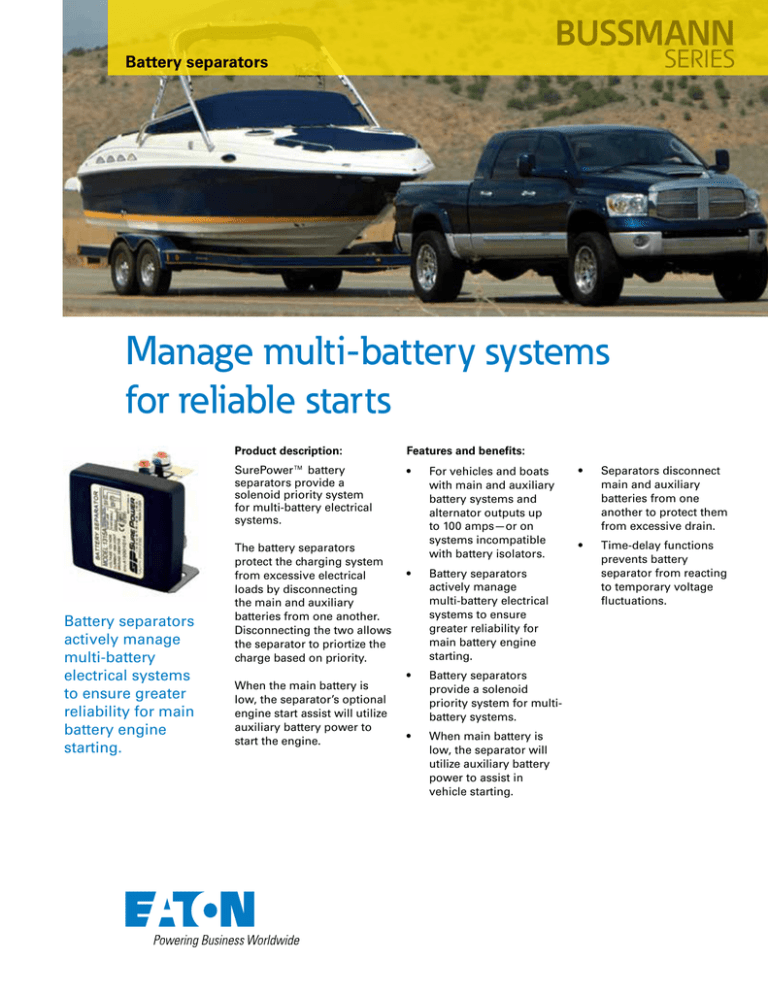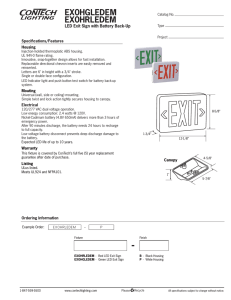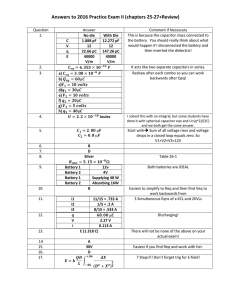
BUSSMANN
SERIES
Battery separators
Manage multi-battery systems
for reliable starts
Battery separators
actively manage
multi-battery
electrical systems
to ensure greater
reliability for main
battery engine
starting.
Product description:
Features and benefits:
SurePower™ battery
separators provide a
solenoid priority system
for multi-battery electrical
systems.
•
The battery separators
protect the charging system
from excessive electrical
loads by disconnecting
the main and auxiliary
batteries from one another.
Disconnecting the two allows
the separator to priortize the
charge based on priority.
When the main battery is
low, the separator’s optional
engine start assist will utilize
auxiliary battery power to
start the engine.
For vehicles and boats
with main and auxiliary
battery systems and
alternator outputs up
to 100 amps—or on
systems incompatible
with battery isolators.
•
Battery separators
actively manage
multi-battery electrical
systems to ensure
greater reliability for
main battery engine
starting.
•
Battery separators
provide a solenoid
priority system for multibattery systems.
•
When main battery is
low, the separator will
utilize auxiliary battery
power to assist in
vehicle starting.
•
Separators disconnect
main and auxiliary
batteries from one
another to protect them
from excessive drain.
•
Time-delay functions
prevents battery
separator from reacting
to temporary voltage
fluctuations.
Engine start assist
When the engine starter is engaged, the battery separator
will compare the voltage in both main and auxiliary batteries.
If the main battery is lower than the auxiliary battery, the
battery separator will engage the auxiliary battery to aid in
engine start. The start signal must reach 3 volts in order for
the auxiliary to main battery connection procedure to begin.
Charging system protection
Once the engine starts, the battery separator monitors
the main battery and charging system voltage. When the
charging system reaches 13.2 volts, the battery separator
will engage, signaling a charged main battery. The auxiliary
battery is then connected to the vehicle charging system.
When the charging system reaches 12.8 volts, the battery
separator will disconnect the auxiliary battery to protect the
vehicle’s charging system. This process of managing the
battery charging is repeated until the engine is turned off.
Priority charging
The battery separator waits until the main battery’s active
charging source reaches approximately 13.2 volts before it
begins charging the auxiliary battery. A uni-directional battery
separator (RB-BS-1314) will only charge the auxiliary battery
when the main battery reaches 13.2 volts. A bi-directional
battery separator (RB-BS-1315) will engage both main and
auxiliary batteries and will disconnect at approximately 12.8
volts.
Simple installation
The battery separators work with any 12 volt DC, negative
ground charging system using 100 amps or less. They easily
connect to the main battery, auxiliary battery and ground. No
system modifications are necessary.
Catalog no.
Description
Model no.
Unit UPC
Unit dimensions
(HxWxL)
Unit weight
(lbs.)
Carton
barcode
RB-BS-1314
Uni-directional 100A
battery separator
1314A
051712408578
3.5˝ x 3.5˝ x 4.75˝
0.858
70051712408577
RB-BS-1315
Bi-directional 100A
battery separator
1315A
051712404044
3.5˝ x 3.5˝ x 4.875˝
0.858
70051712404043
Eaton
1000 Eaton Boulevard
Cleveland, OH 44122
United States
Eaton.com
Bussmann Division
114 Old State Road
Ellisville, MO 63021
United States
Eaton.com/bussmannseries
© 2015 Eaton
All Rights Reserved
Printed in USA
Publication No. 10103
October 2015
For Eaton’s Bussmann series
product information,
call 1-855-287-7626 or visit:
Eaton.com/BussmannConsumer
Eaton and Bussmann are valuable
trademarks of Eaton in the US and
other countries. You are not permitted
to use the Eaton trademarks without
prior written consent of Eaton.
All other trademarks are property
of their respective owners.
Follow us on social media to get the
latest product and support information.




